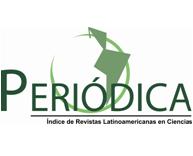USE OF DRIED MORINGA POD FLOUR IN COOKIES AND VENEZUELAN CAKES ELABORATION. PART I
Keywords:
cookies, flour, moringa, cakes, wheat, dried podsAbstract
Introduction:
Moringa oleifera has a high content of proteins, minerals, vitamins and antioxidants that give it nutritional qualities. In this work, the moringa dry pods flour was used in wheat flour partial replacement for cookies and cakes preparation.
Objective:
To evaluate dry moringa pods flour in cookies and cakes elaboration.
Materials and Methods:
The dry pods discarded from the oil production process were selected and conditioned. The flour was characterized according to Venezuelan standards (COVENIN 217, 2001) for wheat flour. Functional parameters established in (Codex Alimentarius 152, 1985) for wheat flour were determined, according to which three formulations of compound flour (moringa-wheat) were made for cookies and cakes elaboration, which were sensorially evaluated ( 5-point hedonic scale)
Results and Discussion:
Moringa dry pods flour characterization showed a low moisture content (3.84%) that does not favor microbial proliferation; high ash content (6.15%) and protein (11.20%), and favorable values for its nutritional contribution. It did not present microbiological contamination. The formulation with greatest acceptance was made whit compound flour (30 % moringa and 70 % wheat).
Conclusions:
Dried moringa pod flour has a high content of fiber, minerals and protein, being useful as raw material in food industry. Products made with compound flour were well accepted and have the required nutritional parameters.
Downloads
Downloads
Published
How to Cite
Issue
Section
License

This work is licensed under a Creative Commons Attribution-NonCommercial 4.0 International License.




















